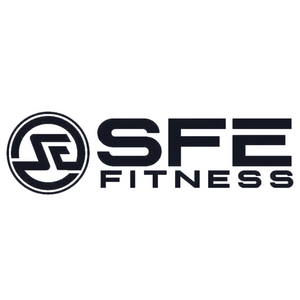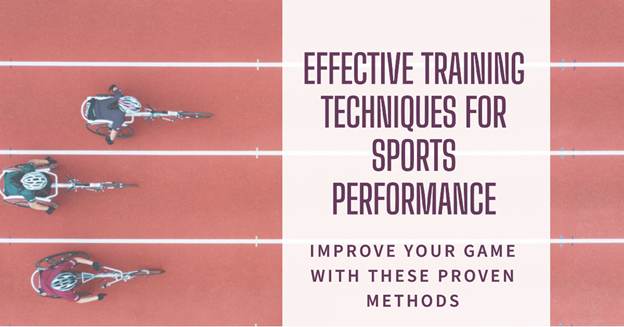Effective Training Techniques for Improving Performance in Sports:
Introduction:
Achieving peak performance in any sport requires dedication, discipline, and a well-rounded training regimen. Whether you're an amateur athlete looking to enhance your skills or a seasoned competitor aiming to reach new heights, implementing effective training techniques is essential. In this article, we will explore a range of strategies and methods to help you improve your performance in your chosen sport. From specific exercises and drills to mental preparation and recovery strategies, we will delve into the key components of a successful training program. So, let's dive in and discover how you can take your performance to the next level.
“The foundation of any effective training plan is setting clear and measurable goals. Define what you want to achieve in your sport, whether it's improving speed, strength, endurance, technique, or all of the above. Break down your goals into short-term and long-term objectives to create a roadmap for your training journey. This will provide focus, motivation, and a sense of direction throughout your training process.” Says Thomas Wilke from Cardboardnerds
Develop a Periodized Training Plan:
“Periodization is a systematic approach to training that divides the year into distinct phases, each with a specific focus. This technique allows you to optimize your training by targeting different aspects of performance throughout the season. Common phases include the off-season (building foundational strength and addressing weaknesses), pre-season (specific skill development), in-season (maintaining performance and managing fatigue), and postseason (active recovery and reflection). Consult with a coach or sports professional to design a periodized plan tailored to your sport and goals.” Says Carl Panepinto, Marketing Manager at Easy Allied Health
Work on Sport-Specific Skills:
“To excel in your sport, it is crucial to prioritize sport-specific skills and techniques in your training. Break down the fundamental movements and actions required in your sport and incorporate drills and exercises that mimic those movements. For example, if you're a basketball player, focus on shooting, dribbling, and defensive drills. Consistent and deliberate practice of sport-specific skills will enhance muscle memory, coordination, and overall performance.” Says Dayna Carlin, Director of Marketing at NovoPath
Strength and Conditioning Training:
“Improving strength, power, and overall conditioning is essential for optimal athletic performance. Incorporate a well-rounded strength and conditioning program that includes exercises targeting the major muscle groups used in your sport. This may involve weightlifting, plyometrics, bodyweight exercises, and functional movements. Consult with a strength and conditioning specialist to design a program tailored to your sport, focusing on building strength, power, speed, agility, and endurance.” Says Daniel Foley, head of content at Believe Money
Mental Preparation and Visualization:
“Sports performance is not only physical but also mental. Develop mental strategies to enhance focus, concentration, and confidence. Incorporate visualization techniques, where you mentally rehearse successful performances and envision achieving your goals. Practice mindfulness and stress management techniques to stay calm and composed during high-pressure situations. Seek guidance from sports psychologists or mental performance coaches to further refine your mental preparation.” Says Olivia Parker, Chief Marketing Officer (CMO) at Better DaysTreatment
Cross-Training and Active Recovery:
“Cross-training involves participating in alternative activities that complement your primary sport. Engaging in different forms of exercise, such as swimming, cycling, or yoga, can improve overall fitness, prevent overuse injuries, and provide a mental break from your sport. Additionally, prioritize active recovery techniques such as foam rolling, stretching, and low-intensity activities to promote muscle repair, reduce soreness, and prevent burnout.” Says Daniel Adams, Chief Marketing Officer (CMO) at Still Water Wellness
Monitor Progress and Adjust:
“Regularly assess your progress and make necessary adjustments to your training plan. Track your performance metrics, such as speed, strength, and endurance, to identify areas of improvement. Keep a training journal to record your workouts, achievements, challenges, and reflections. Analyze your data and seek feedback from coaches or trainers to fine-tune your training program and address any weaknesses or plateaus.” Says Matthew Appleton, e-commerce manager of Appleton Sweets
Conclusion:
Improving performance in your chosen sport requires a comprehensive and systematic approach to training. By setting clear goals, developing a periodized plan, focusing on sport-specific skills, incorporating strength and conditioning training, prioritizing mental preparation, engaging in cross-training and active recovery, and monitoring progress, you can optimize your training and reach new levels of performance. Remember, consistency, dedication, and a growth mindset are key to achieving long-term success. So, lace up your shoes, hit the training ground, and embark on your journey towards becoming the best athlete you can be.

